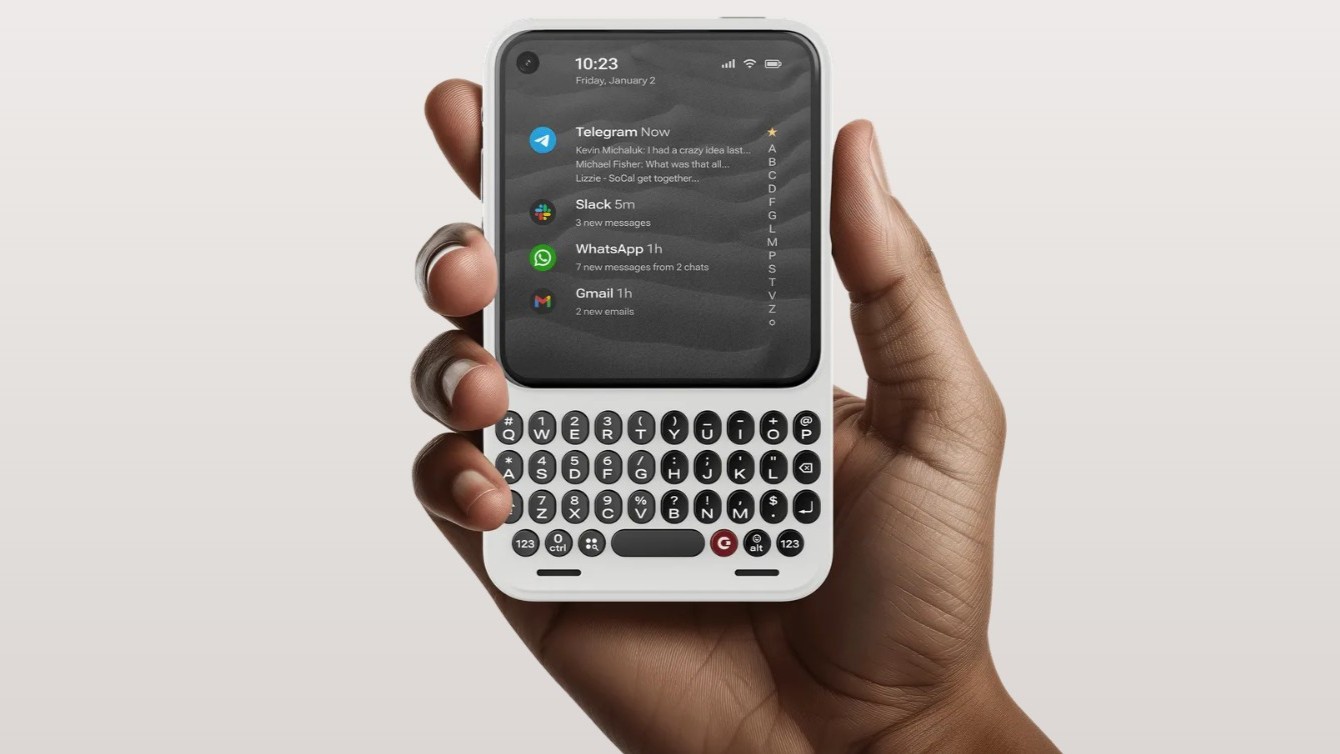OnePlus 10 Pro vs. Samsung Galaxy S22 Ultra
Can the OnePlus flagship hold its own against the might of Samsung?
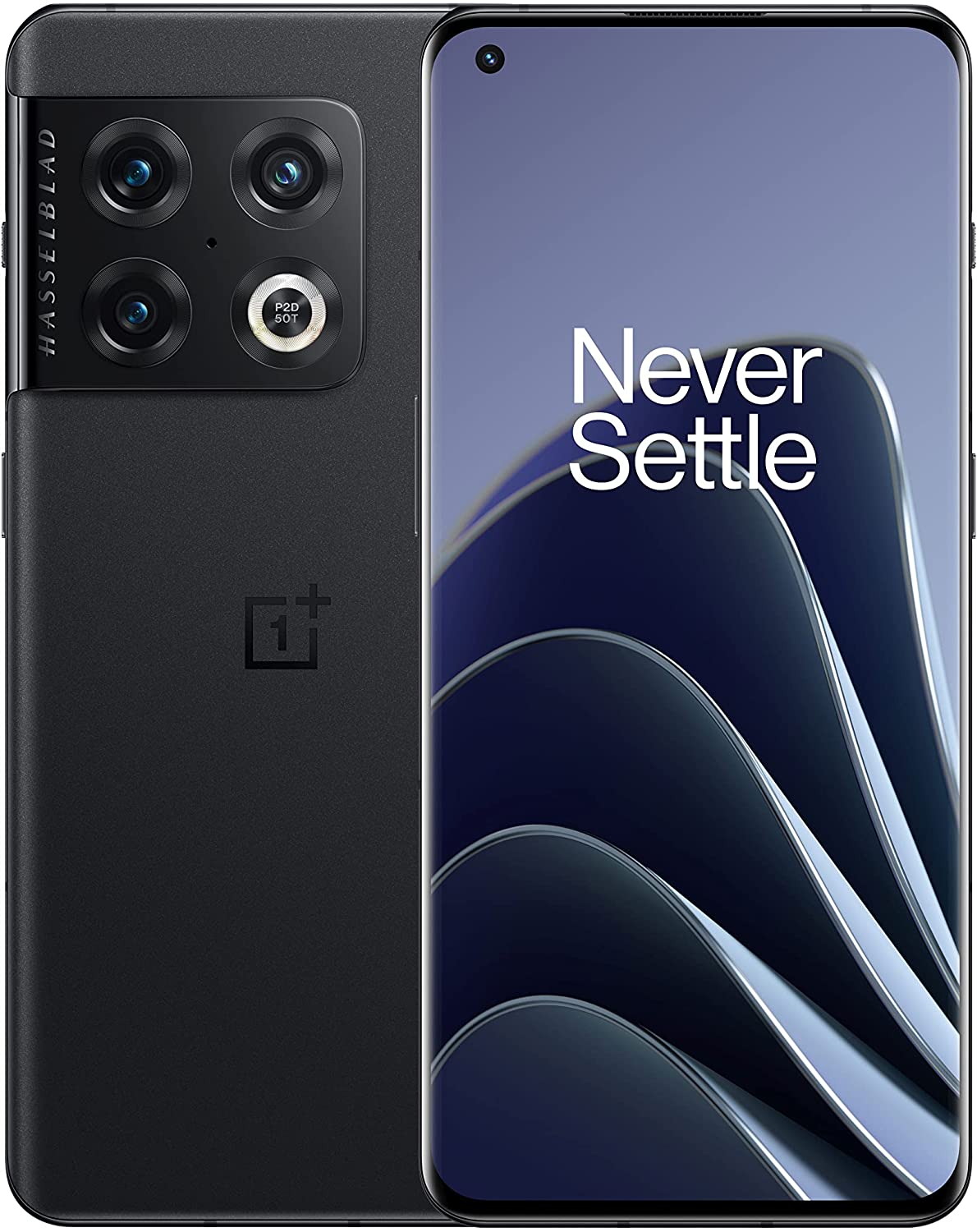
A good choice
The OnePlus 10 Pro continues the heritage of offering phones with powerful hardware and a lot of extras. You won't find any slowdowns here, and the 120Hz AMOLED screen is a delight to use for gaming and streaming videos. The 48MP camera at the back takes stellar photos, the software doesn't have any bloatware, you get 80W wired and 50W wireless charging, and three Android OS updates. The auxiliary cameras aren't quite up to the mark and the phone misses out on a few features, but as an affordable alternative to the S22 Ultra, there is a lot to like here.
Pros
- Smooth 120Hz AMOLED screen
- Powerful internal hardware
- 80W fast charging / 50W wireless charging
- 48MP camera takes outstanding photos
- All-day battery life
Cons
- Won't get as many updates as S22 Ultra
- No IP68 rating as standard
- Auxiliary cameras not up to the mark
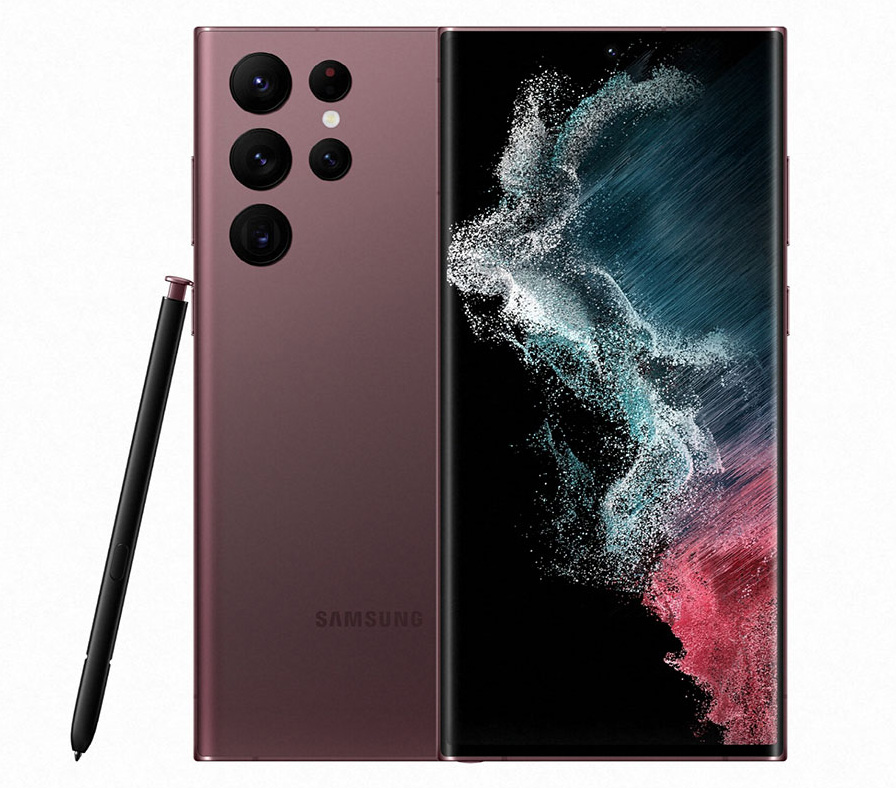
The best overall
The Galaxy S22 Ultra continues to be the best overall package, and I don't see that changing in 2022. The phone delivers a phenomenal 120Hz AMOLED screen backed by the latest internal hardware with global 5G connectivity, outstanding cameras with a lot of versatility, all the extras you're looking for, and four guaranteed Android OS updates — more than any other Android manufacturer. Sure, it doesn't come with a charger and you're paying a lot of money, but if you want the best that Android has to offer, this is the phone to get.
Pros
- Stunning 120Hz AMOLED panel
- One of the fastest phones around
- Phenomenal cameras
- Four guaranteed Android OS updates
- IP68 water resistance / wireless charging
- Integrated stylus
Cons
- Costlier than the 10 Pro
- No bundled charger
- Fast charging not on par with rivals
With the OnePlus 10 Pro, OnePlus has managed to deliver a strong package featuring the latest hardware, a smooth 120Hz screen, and ultra-fast charging. Throw in the Hasselblad partnership, and you get a strong camera that holds up against its rivals. As for Samsung, the Galaxy S22 Ultra continues to dominate thanks to its combination of hardware, cameras, and long-term software updates. With both phones offering a lot of features, let's take a look at where they're similar, and which device you should pick up if you're looking to buy a flagship in 2022.
OnePlus 10 Pro vs. Galaxy S22 Ultra: Design and screen
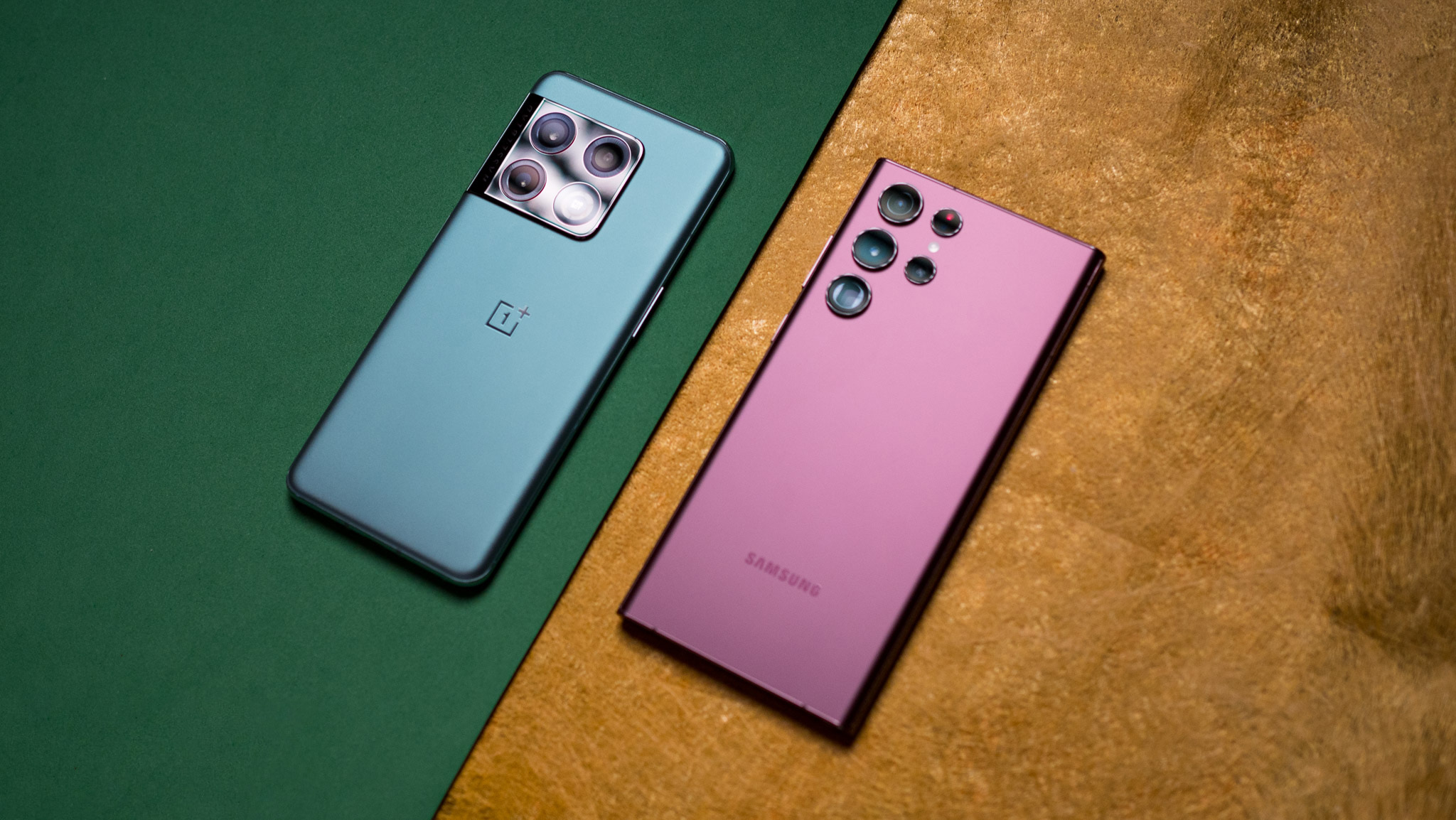
These are two of the best Android phones you can buy today, and they feature attractive designs with interesting color options. The OnePlus 10 Pro has a massive camera housing that blends seamlessly into the mid-frame, with the rectangular housing dominating the design at the back. It looks good — if a bit busy — on the Emerald Forest version, with the green color contrasting well with the camera island.
Both phones have gorgeous designs, but the S22 Ultra stands out a little bit more — and it is more durable.
But when it comes to the design, the Galaxy S22 Ultra is the outright winner. Samsung didn't make too many changes to its design aesthetic, making the S22 Ultra slightly wider than its predecessor, and a smidgen shorter. The biggest difference is at the back with the camera housing, where there isn't any — the three cameras jut out of the chassis and are housed within individual rings, and it looks minimalist and elegant.
What makes the S22 Ultra stand out just that little bit more is the Burgundy color option. The color immediately makes the phone noticeable, and it is gorgeous to behold. In a lot of ways, the S22 Ultra builds on what Samsung did with the Note 20 Ultra two years ago, and the Burgundy variant is an evolution of the Mystic Bronze version of the Note 20.
As for usability, both phones are just as tall, with the S22 Ultra wider and bulkier at 77.9mm and 8.9mm — the 10 Pro is 73.9mm and 8.6mm. Samsung's flagship is significantly heavier at 228g versus 201g, but to its credit, the weight is balanced very well and you don't get the feeling that the phone is quite as heavy.
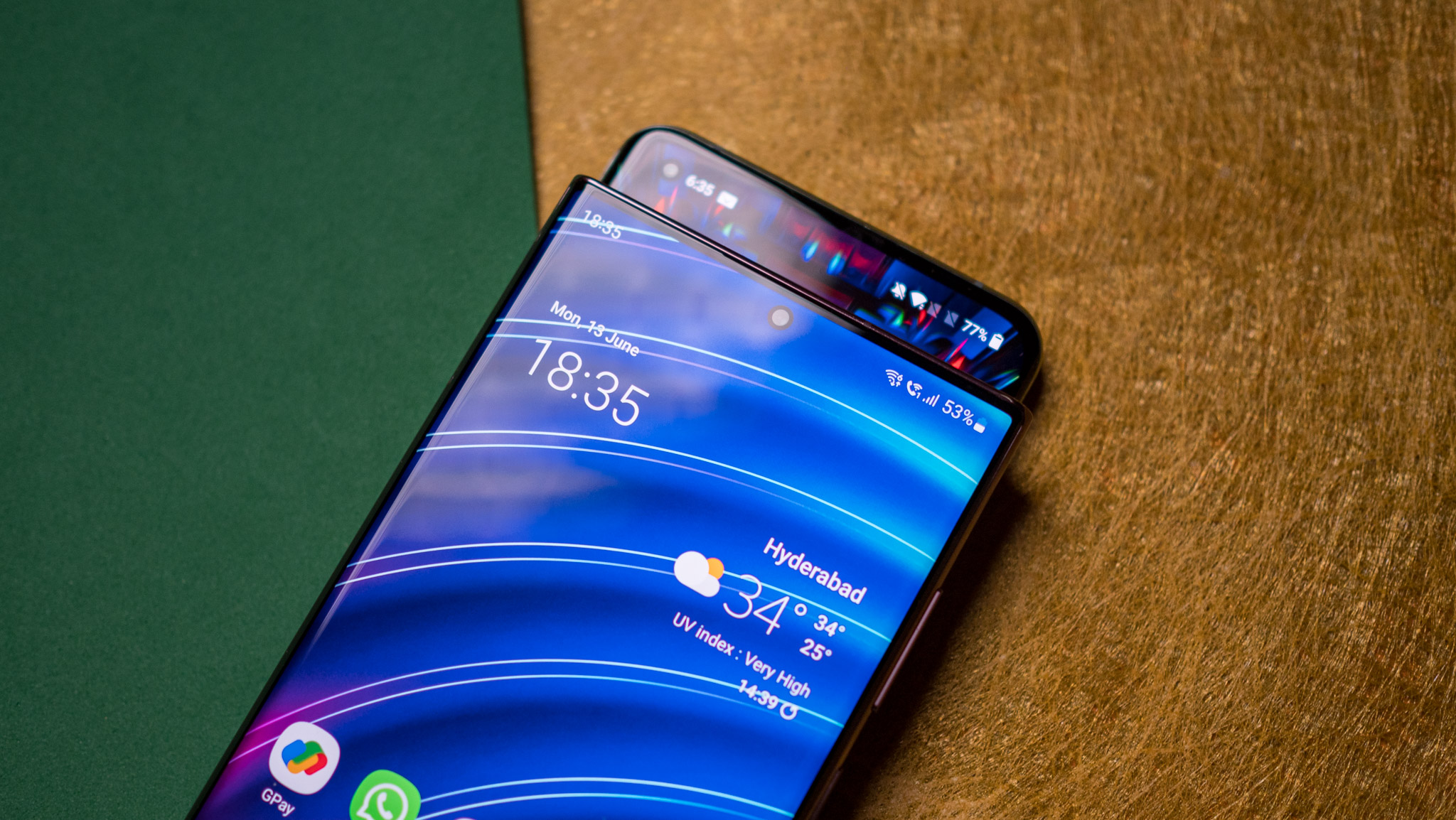
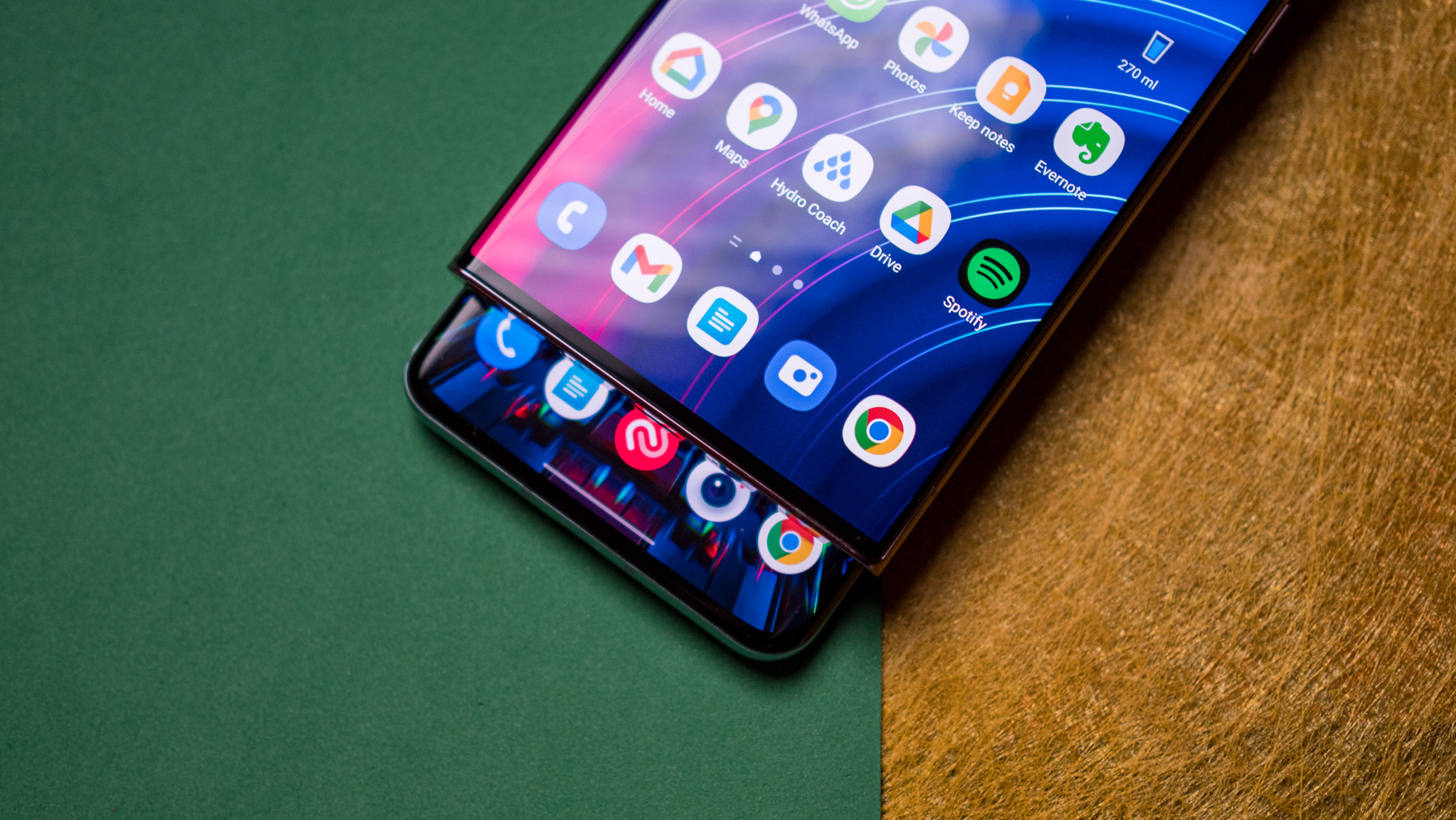

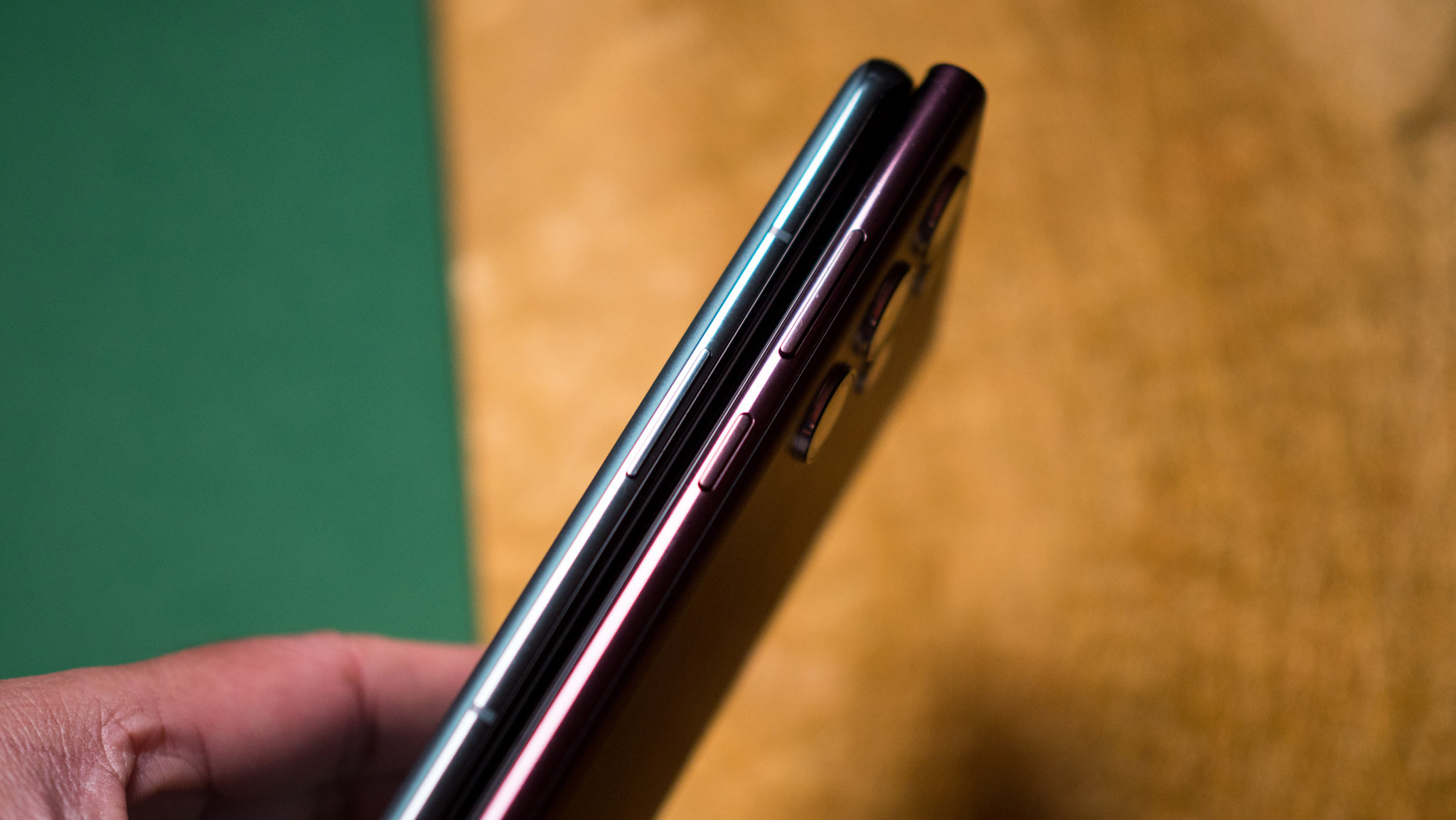
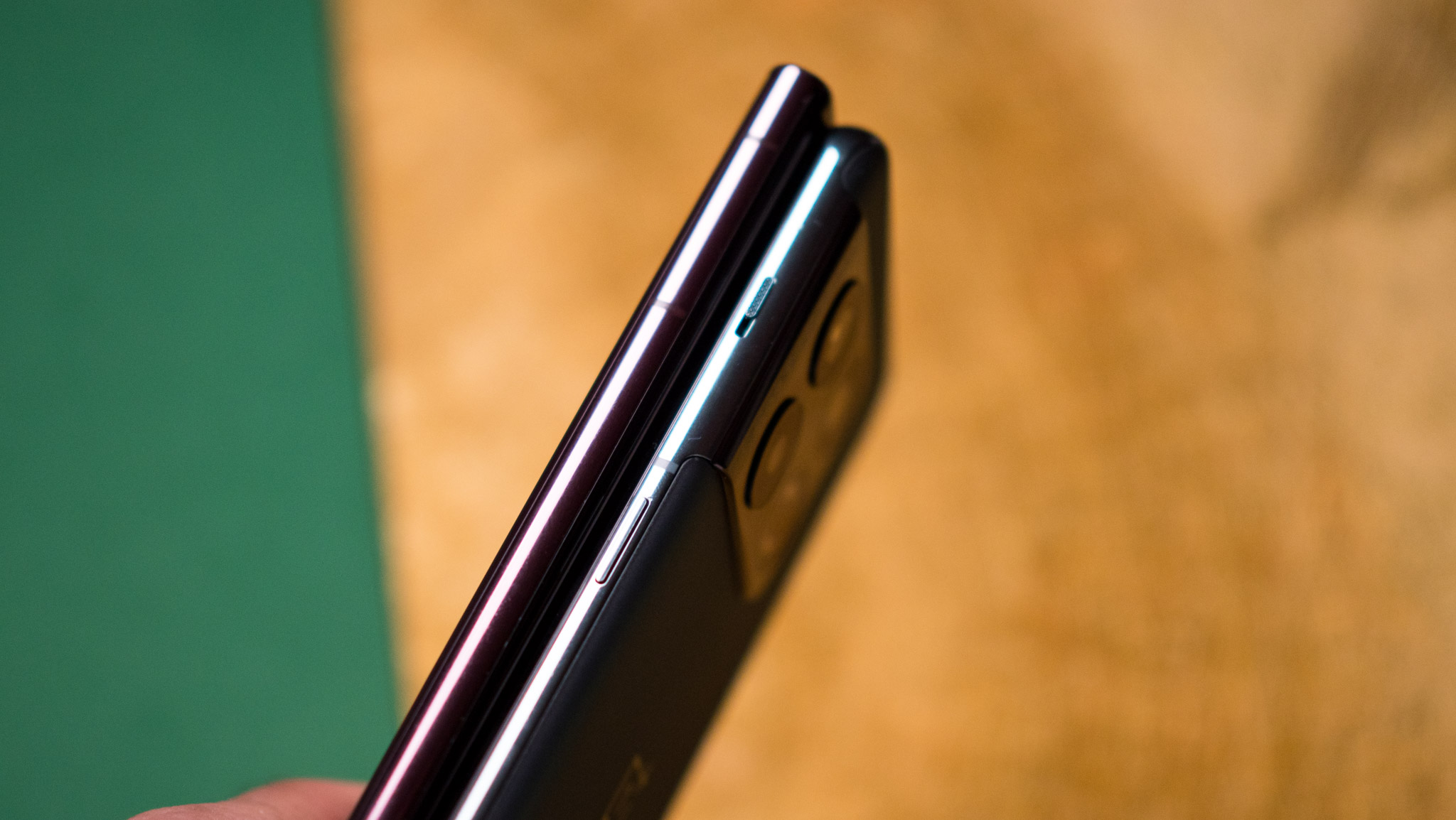
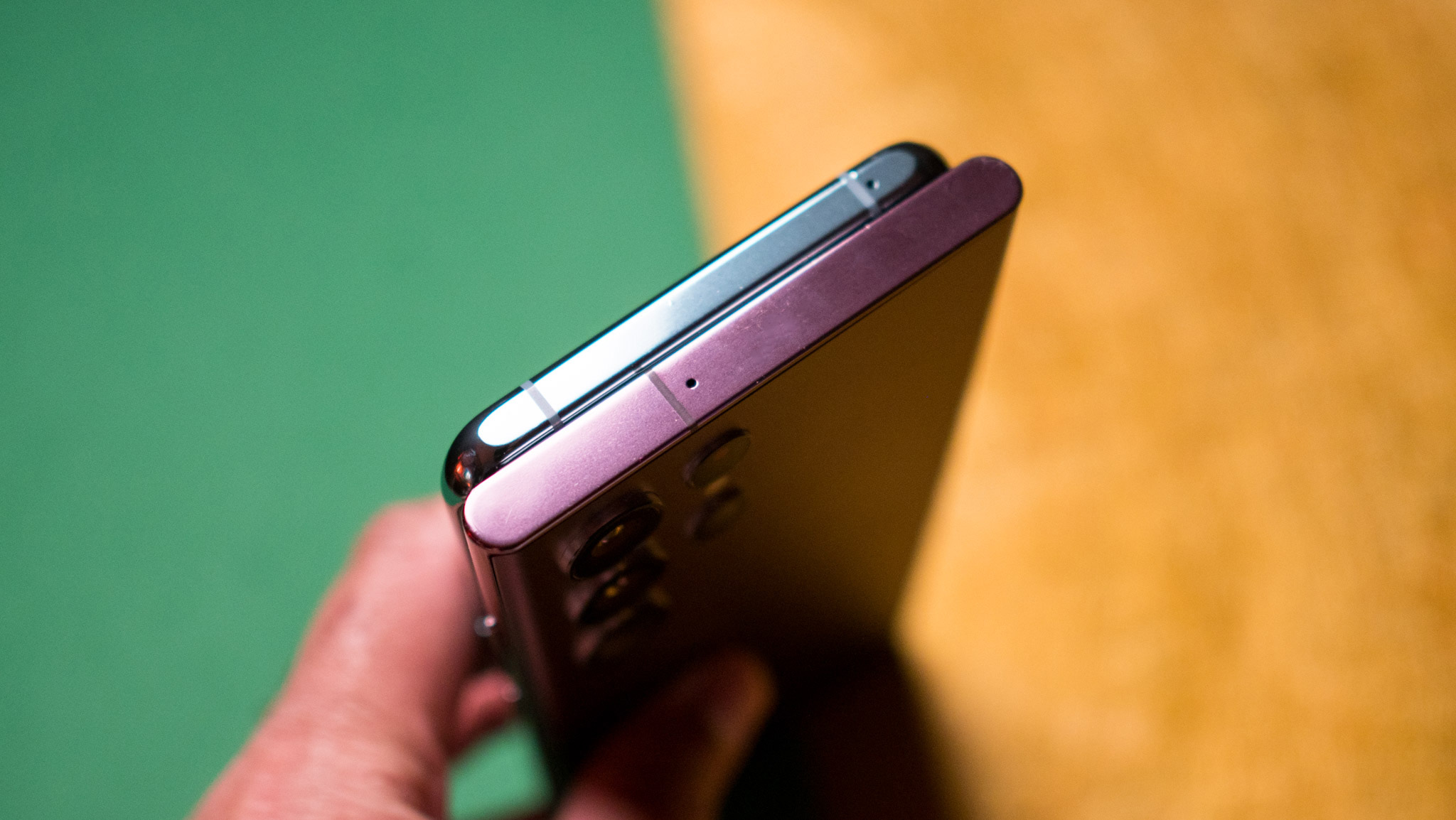
Of the two devices, the 10 Pro is just that little bit easier to hold and use thanks to the flowing curves at the front and back, and the added width of the S22 Ultra makes it slightly unwieldy. Both phones miss out on the 3.5mm jack and MicroSD slot, but for what it's worth, you get dual-SIM connectivity outside North America.
Both devices have an aluminum chassis that's sandwiched between two panes of glass, but Samsung is using an "Armor aluminum" frame that makes it more resilient to tumbles and scratches, and I can attest to its efficacy. I tested both of these devices extensively this year, and like all the phones I use, I did so without using a screen protector or a case.
Get the latest news from Android Central, your trusted companion in the world of Android
The S22 Ultra took at least a half dozen tumbles — I wasn't kidding about it being unwieldy — and in a testament to its durability, it came away without any damage whatsoever. There was one instance where there was a resounding crash when it hit the floor after sliding off a sideboard, and even though it landed directly on its back, the glass didn't shatter or even get any nicks. The 10 Pro similarly weathered a few tumbles without any issues, but after two months of use, it has picked up a noticeable amount of scratches at the front.
Part of the reason for the S22 Ultra's resilience has to do with the fact that it has Corning's Gorilla Glass Victus+ covering the front and rear panes of glass, with the 10 Pro featuring Gorilla Glass Victus at the front and Gorilla Glass 5 at the back.
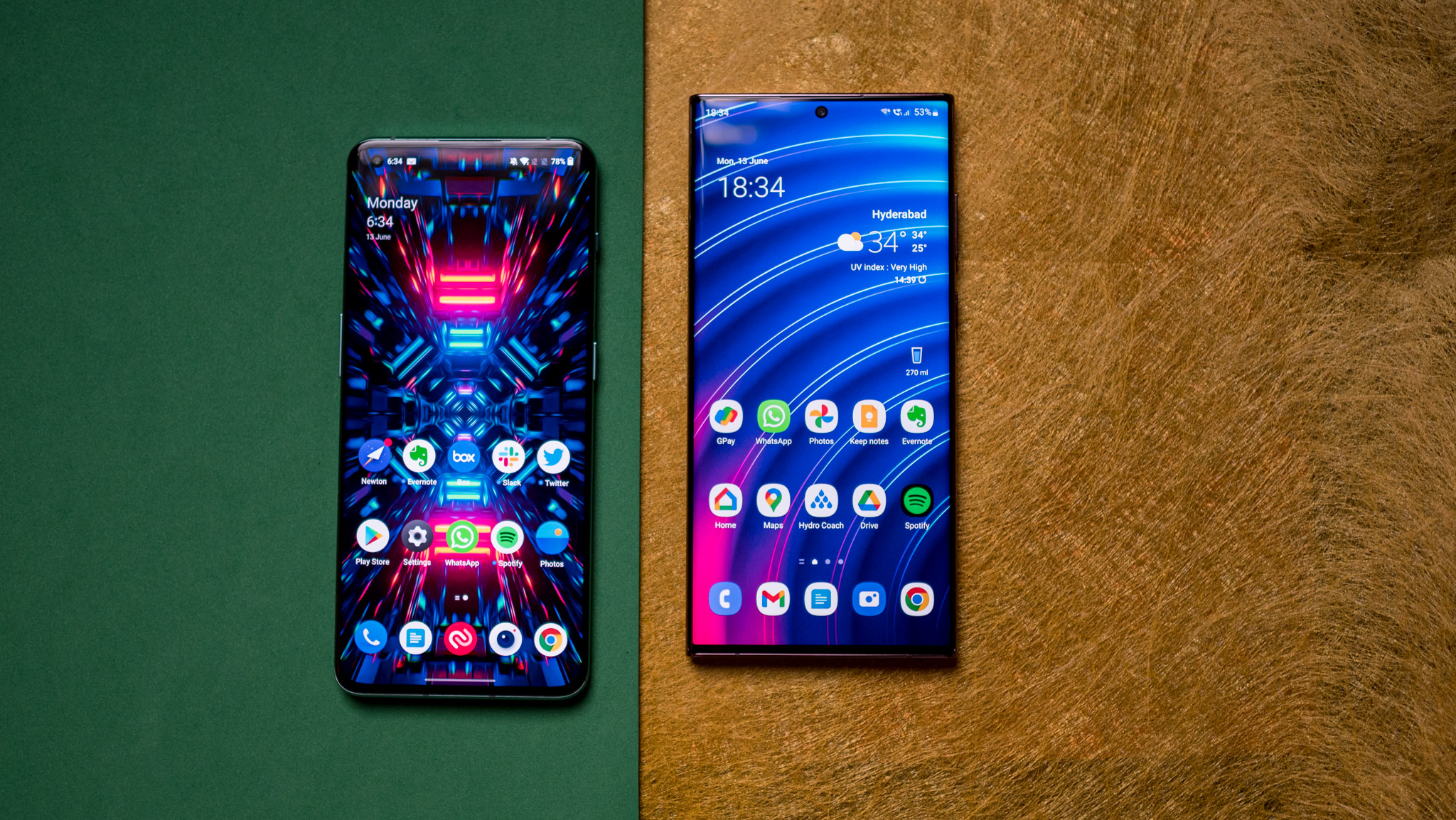
As you'd imagine from a 2022 flagship, both devices have sublime screens with the latest tech. The OnePlus 10 Pro comes with a 6.7-inch QHD+ (3216 x 1440) AMOLED panel with 120Hz refresh and a maximum brightness of 1300 nits for HDR10+ content, and it is fantastic in daily use.
You're getting the best screen tech currently available — both devices have 120Hz AMOLED screens and plenty of customizability.
Colors are phenomenal out of the box. You get a lot of customizability — including tweaking the color balance, setting up an always-on mode, and so on — and the dynamic refresh tech automatically scales the refresh rate based on the content playing on the screen.
As good as the 10 Pro is in this area, the Galaxy S22 Ultra manages to outshine it. Samsung is the industry leader when it comes to AMOLED panels, and it saves the best for its own flagships, as is evident here. The S22 Ultra has a 6.8-inch QHD+ (3088 x 1440) AMOLED panel with 120Hz refresh, and it goes up to an advertised 1750 nits for HDR10+ content.
You get an extensive set of customizations options, and Samsung uses a similar dynamic refresh tech — albeit one that isn't quite as fast at changing refresh rate on the fly. That said, you're not likely to notice that in day-to-day use.
Both phones also get stereo sound, and there isn't much to differentiate either device in this area. They get sufficiently loud and detailed, and the onboard audio is more than adequate for gaming or streaming videos.
OnePlus 10 Pro vs. Galaxy S22 Ultra: Hardware
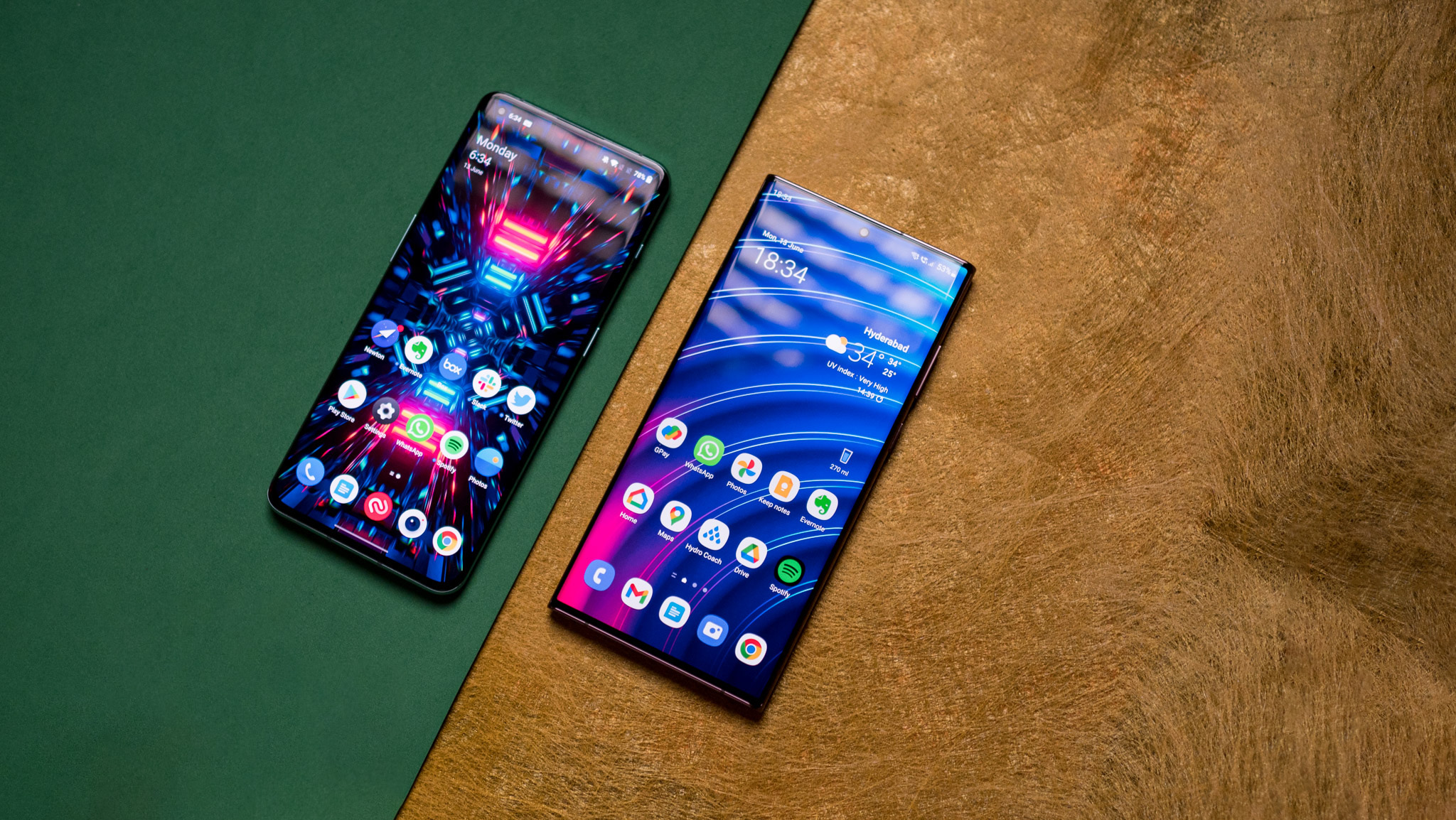
Both phones feature the latest internal hardware, and include all the extras you're looking for — with a caveat. The 10 Pro doesn't get IP68 dust and water resistance as standard, even though its predecessor had this feature. The phone itself is water-resistant, but without an official IP rating, it isn't guaranteed to be protected against dust and water ingress, and that's a letdown considering how much the device costs.
Both phones have the latest hardware, but if you want all the extras, the Galaxy S22 Ultra is the obvious choice.
In a similar vein, the 10 Pro uses a new 80W fast charging standard, but because the tech doesn't work over 110v, the North American model gets the same 65W charger as last year. Of course, you don't get any charger at all with the S22 Ultra, so this is a win in and of itself for the 10 Pro, but the fact of the matter is that it isn't able to fully utilize its charging tech in North America.
Furthermore, the 10 Pro loses out on Wi-Fi 6e, with the device limited to Wi-Fi 6. This isn't a huge deal, as Wi-Fi 6e routers aren't anywhere as mainstream just yet, but it is another area where the device is found to be lacking against Samsung's offering.
Both devices use Qualcomm's latest 4nm Snapdragon 8 Gen 1 silicon, and although Samsung has another version of the S22 Ultra featuring its in-house Exynos 2200, that model isn't as widely available this time around. That should be welcome news to those interested in picking up the S22 Ultra in most global markets — the Qualcomm model is definitely the better choice of the two.
The hardware on offer means that both devices are among the fastest currently available, and you won't see any slowdowns whatsoever. It's a delight to play intense games, read long-form articles, and stream content on either device. I like the S22 Ultra a little bit more just because the screen size and dimensions make it more conducive for reading and consuming media, but the 10 Pro isn't far behind.
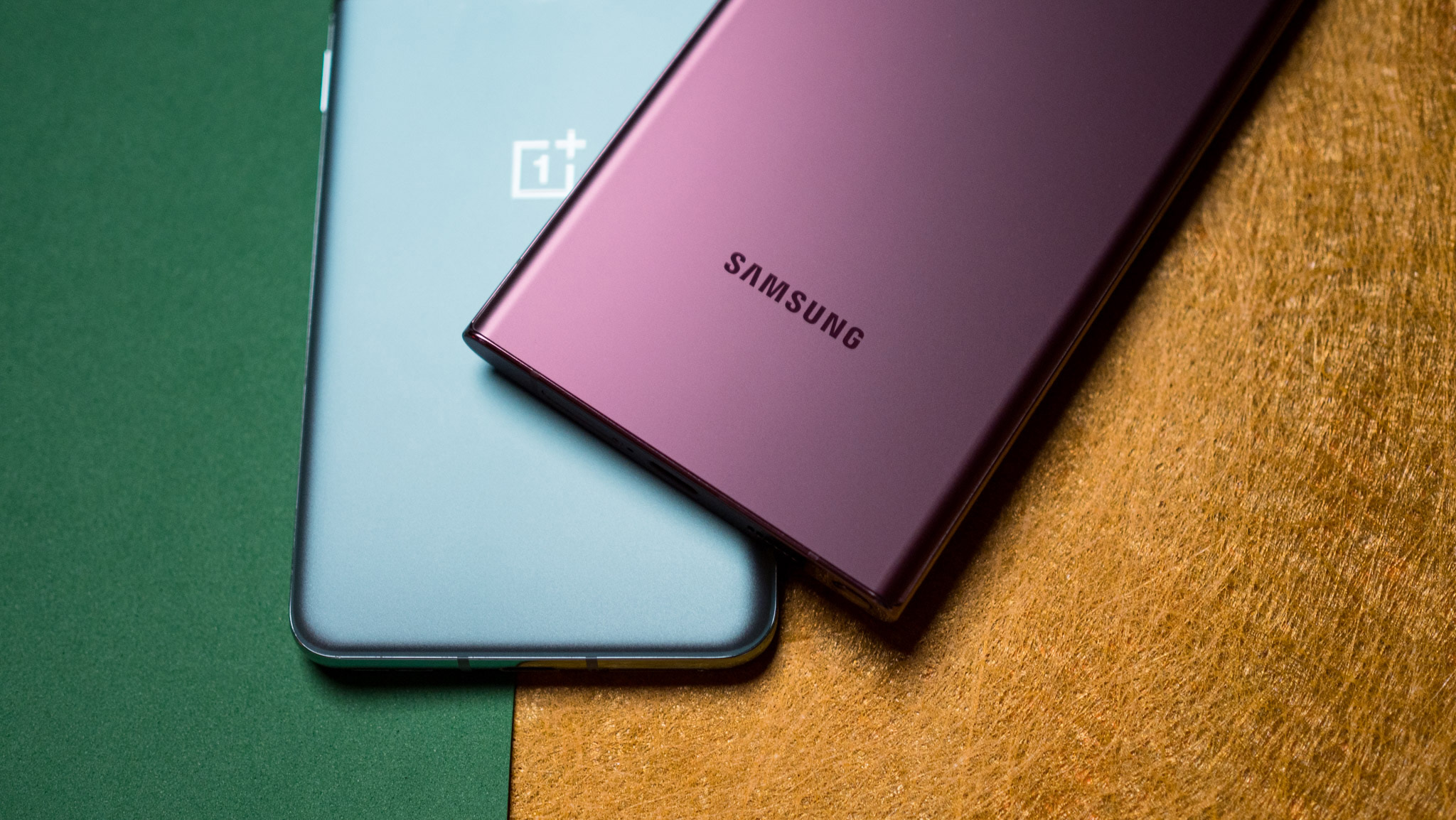
Where Samsung has a clear advantage is with the extras; you get IP68 dust and water resistance as standard, but the biggest addition is the S Pen. Unlike last year, it is integrated into the chassis of the device, and it makes a huge difference for productivity. The stylus is pressure-sensitive and lets you jot notes, acts as a remote shutter button, and so much more. There really isn't a similar alternative elsewhere, and that makes Samsung's flagship all the more enticing.
The OnePlus 10 Pro is clearly in the lead when it comes to charging tech, but you'll get a day's worth of battery life out of both devices.
Coming to the battery side of things, both phones have a 5000mAh battery and easily manage to last a full day without any issues — even on days with heavy use. And when you do need to charge either device, there's fast wired charging and wireless charging.
The 10 Pro is firmly in the lead here thanks to its 80W fast charging tech, taking just 35 minutes to fully charge the device. The North American model is limited to 65W, and even that takes just 45 minutes to fully charge the 5000mAh battery. And you get 50W wireless charging as well, and you get a full charge in under an hour wirelessly.
For its part, Samsung's flagship has 45W fast charging, but it is woefully behind the 10 Pro. It takes over an hour to charge the device, and wireless charging is limited to 15W. Samsung is on the back foot in this particular area, but for what it's worth, the slower charging standard should increase battery longevity.
OnePlus 10 Pro vs. Galaxy S22 Ultra: Cameras
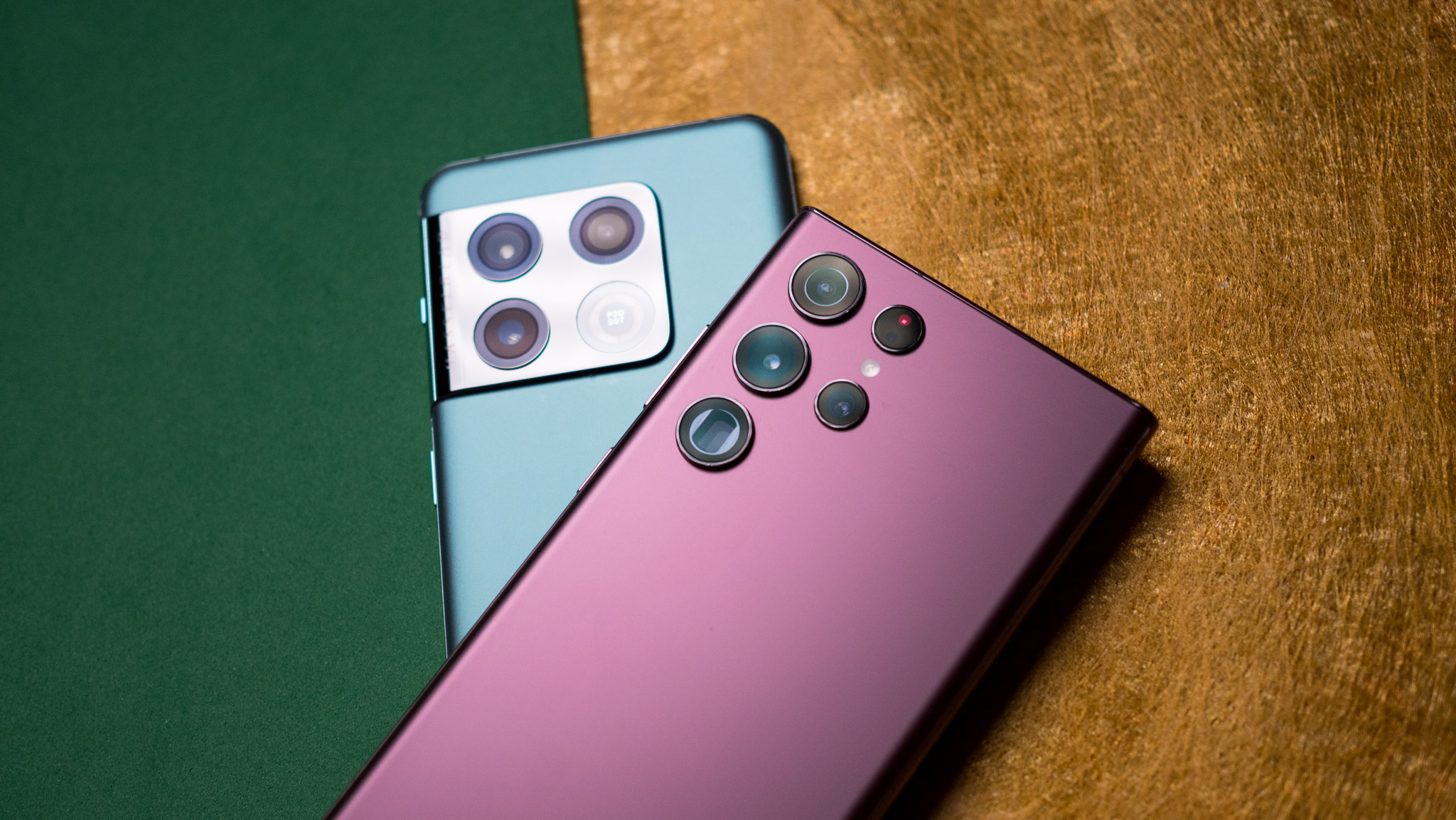
OnePlus phones never had the best cameras, but that changed in recent years as the Chinese manufacturer partnered with Hasselblad for tuning the cameras on its devices. That led to significantly better cameras on the 9 Pro, and the 10 Pro continues in the same vein, with a few tweaks. This time, the tuning algorithms have been tweaked to favor natural colors, and the usual assortment of Hasselblad shooting modes and extras are still intact.
The OnePlus 10 Pro takes stellar photos, but the S22 Ultra has the more versatile camera package.
The hardware itself hasn't changed, with the 10 Pro featuring the same 48MP IMX789 module that debuted on the 9 Pro last year. There's a new 50MP Samsung JN1 wide-angle lens that isn't quite as good as last year, with OnePlus reducing pixel size in favor of a wider field-of-view. There's also an 8MP telephoto lens with 3.3x optical zoom — same as last year.
Samsung didn't make any changes to the hardware itself, using the same four sensors as last year. That includes a 108MP main lens with OIS, 12MP wide-angle lens, and dual 10MP telephoto cameras with OIS that go up to 10x optical zoom. The front 40MP module is also unchanged.
The OnePlus 10 Pro does an outstanding job in daylight situations, delivering photos with plenty of dynamic range and a lot of detail. The tuning is noticeably different to last year, with resultant images not as overly saturated.
It holds its own in low-light situations as well, and while it tends to shoot at lower ISO levels to ensure there isn't visible noise, the photos are vibrant and you don't miss out on finer details.
That said, it tends to be inconsistent at times, and there are situations where the camera is aggressive. While not as saturated as last year, photos aren't necessarily accurate, and that's evident when seen against Samsung's offering.
For its part, the Galaxy S22 Ultra takes consistent photos in any scenario, and while there are issues with blown highlights at times, that's not usually the case. Where it has a distinct edge is with the auxiliary lenses — the wide-angle and zoom lenses do a great job delivering photos of the same caliber as the 108MP shooter, and in my use, I got usable shots at up to a 20x zoom level without too much artifacting.
The same isn't true for the 10 Pro; other than the 48MP lens, the two auxiliary cameras aren't worth the hassle most of the time. Although Samsung didn't tweak the cameras too much, the S22 Ultra continues to hold its own among the best Android phones.
OnePlus 10 Pro vs. Galaxy S22 Ultra: Software
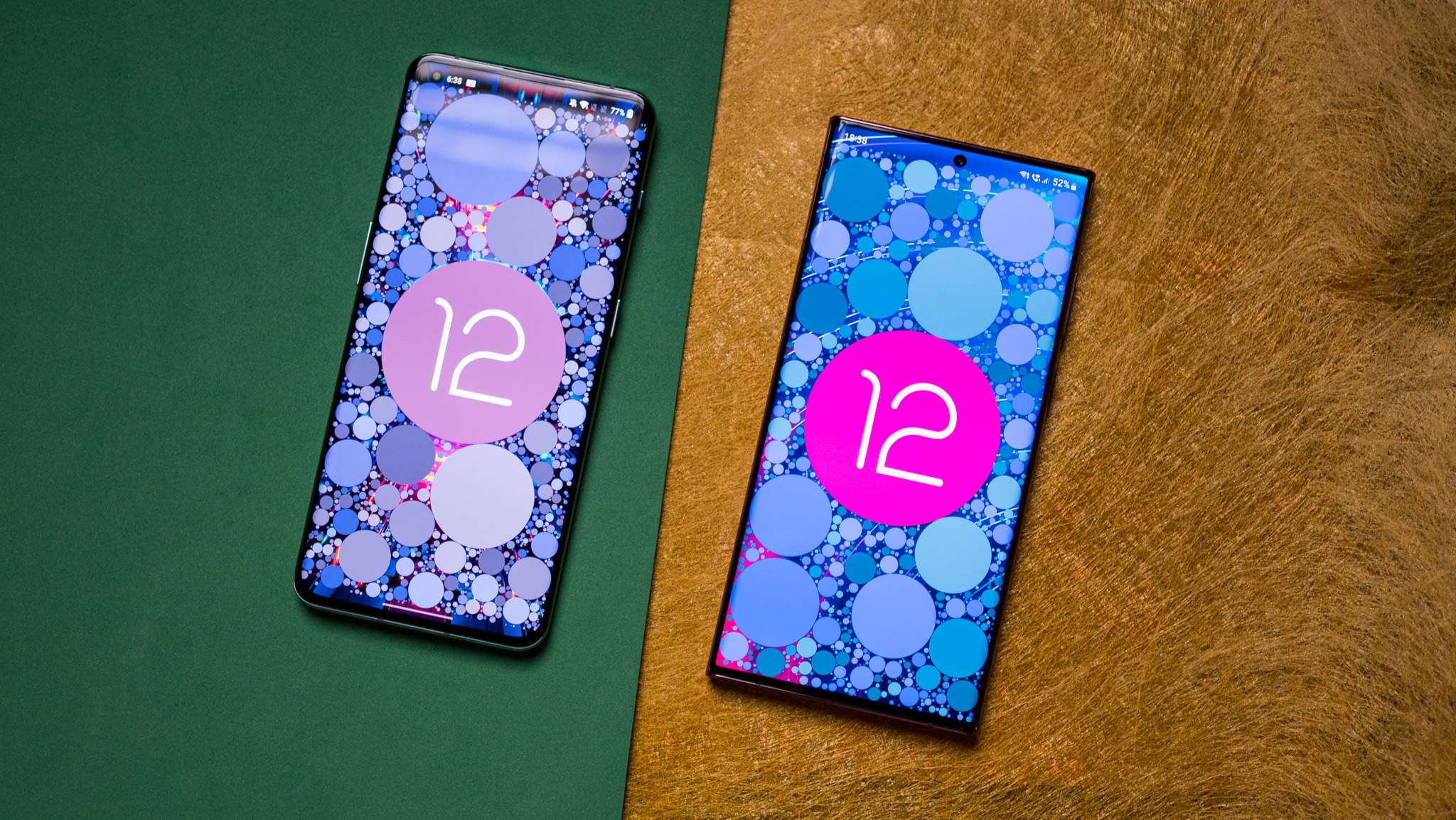
OnePlus used to have the best user interface on Android, but over the course of the last year, OxygenOS turned into a clone of ColorOS. The integration was fraught with issues, leading to a radical design change, with new features that don't feel coherent. For what it's worth, the interface continues to be free of bloatware, and there are no ads.
OxygenOS is devoid of bloatware and ads, but Samsung is the outright leader for software updates.
Samsung, meanwhile, turned its software efforts around in the same time, making One UI the best manufacturer skin currently on Android. The latest One UI 4.1 build has all the features Google introduced in Android 12, and Samsung's exclusive suite of software features give it an edge, with the likes of Samsung Pay and DeX making a real difference.
I used to switch over to OxygenOS after finishing my slate of reviews, but these days, I find myself going to One UI more and more. The clean design, combined with the extensive feature-set and customizability thanks to unique utilities like Good Lock, make Samsung's UI a great overall option in 2022.
Samsung still needs to make a few changes, particularly around the ads situation. I had to turn off push notifications for most Samsung services because I was getting ads every other day, invariably for the S22 Ultra — the device I'm already using.
There's also the update situation to consider. Samsung guarantees four Android OS updates and five years of security updates to the Galaxy S22 Ultra, and that's better than any other Android phone available today, including Google's Pixel 6 Pro. By guaranteeing long-term updates, Samsung has ensured that the S22 Ultra stays relevant for a lot longer, and that is a big deal for the Android ecosystem as a whole.
For its part, OnePlus will deliver three Android OS updates and four years of security updates to the 10 Pro, but I'm not confident in the manufacturer's ability to roll out updates on time. Recent updates that were meant to be stable were full of bugs and connectivity issues, and although OnePlus says that it will go back to its roots with the forthcoming OxygenOS 13 update based on Android 13, it will need to show that it can deliver.
OnePlus 10 Pro vs. Galaxy S22 Ultra: You can't go wrong here
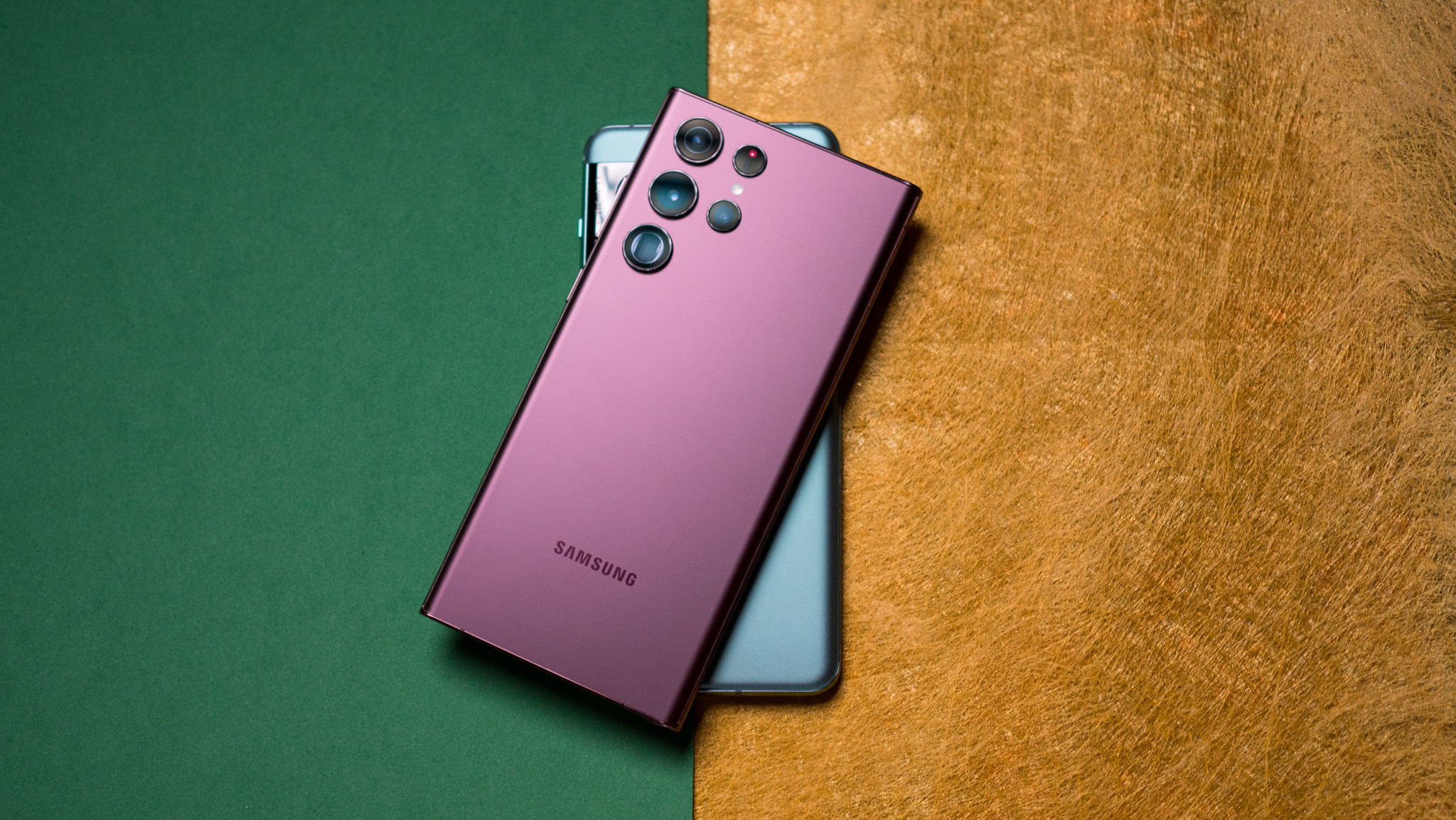
The OnePlus 10 Pro is a good option to consider — particularly if you're in North America and don't have access to the likes of the Xiaomi 12 Pro or the Find X5 Pro. It has a gorgeous 120Hz AMOLED screen, it is one of the fastest phones around, the main camera takes outstanding photos, and you get all-day battery life with ultra-fast charging.
For my money, I'd get the Galaxy S22 Ultra — this is the best overall flagship of 2022.
The S22 Ultra, meanwhile, has a large 6.8-inch 120Hz AMOLED screen, and is the best you'll find on any phone today. It also has the latest internal hardware along with all the extras, you get all-day battery life, and the integrated stylus is a big differentiator.
You also get an imaging system that takes phenomenal photos, and the auxiliary lenses are great in their own right. And then there's the software — with four guaranteed Android OS updates, there isn't another Android manufacturer that will deliver the same number of updates as Samsung.
When you're paying over $1,000 for a phone, you want the absolute best. And in that regard, the Galaxy S22 Ultra is the obvious choice here. I used all the 2022 flagships, and I'm not exaggerating when I say that the Galaxy S22 Ultra is the best Android phone currently available.
That said, if you want to save some cash, the OnePlus 10 Pro is a worthwhile alternative at $900. It doesn't have as much to offer, but then again, it costs $300 less.

A good choice
The OnePlus 10 Pro nails the basics, delivering a good overall package that feels great to hold and use. It has the latest screen tech and internal hardware, the camera takes standout photos, and it charges faster than its rivals. It won't get as many updates, and the auxiliary cameras aren't as good, but for what it costs, it is a good option.

The best overall
If you want the best flagship in the market, this is the phone for you. Samsung managed to deliver all the features you could ask for — and then some — with the S22 Ultra, and the result is a device that isn't lacking in any area. Yes, it costs a lot more than its rivals, but you are getting much more features here. If money isn't an object, this is the phone to buy in 2022.

Harish Jonnalagadda is Android Central's Senior Editor overseeing mobile coverage. In his current role, he leads the site's coverage of Chinese phone brands, networking products, and AV gear. He has been testing phones for over a decade, and has extensive experience in mobile hardware and the global semiconductor industry. Contact him on Twitter at @chunkynerd.
